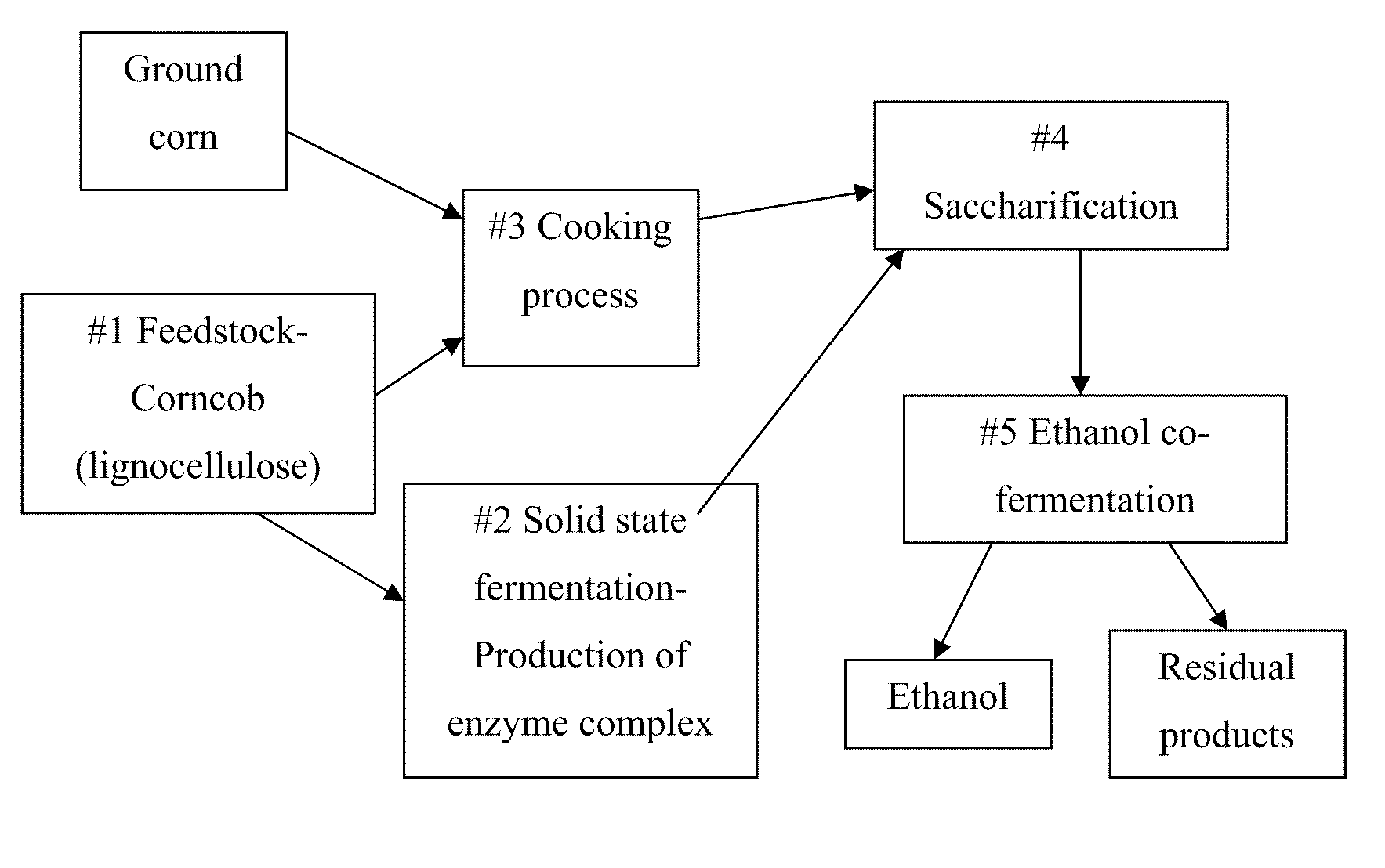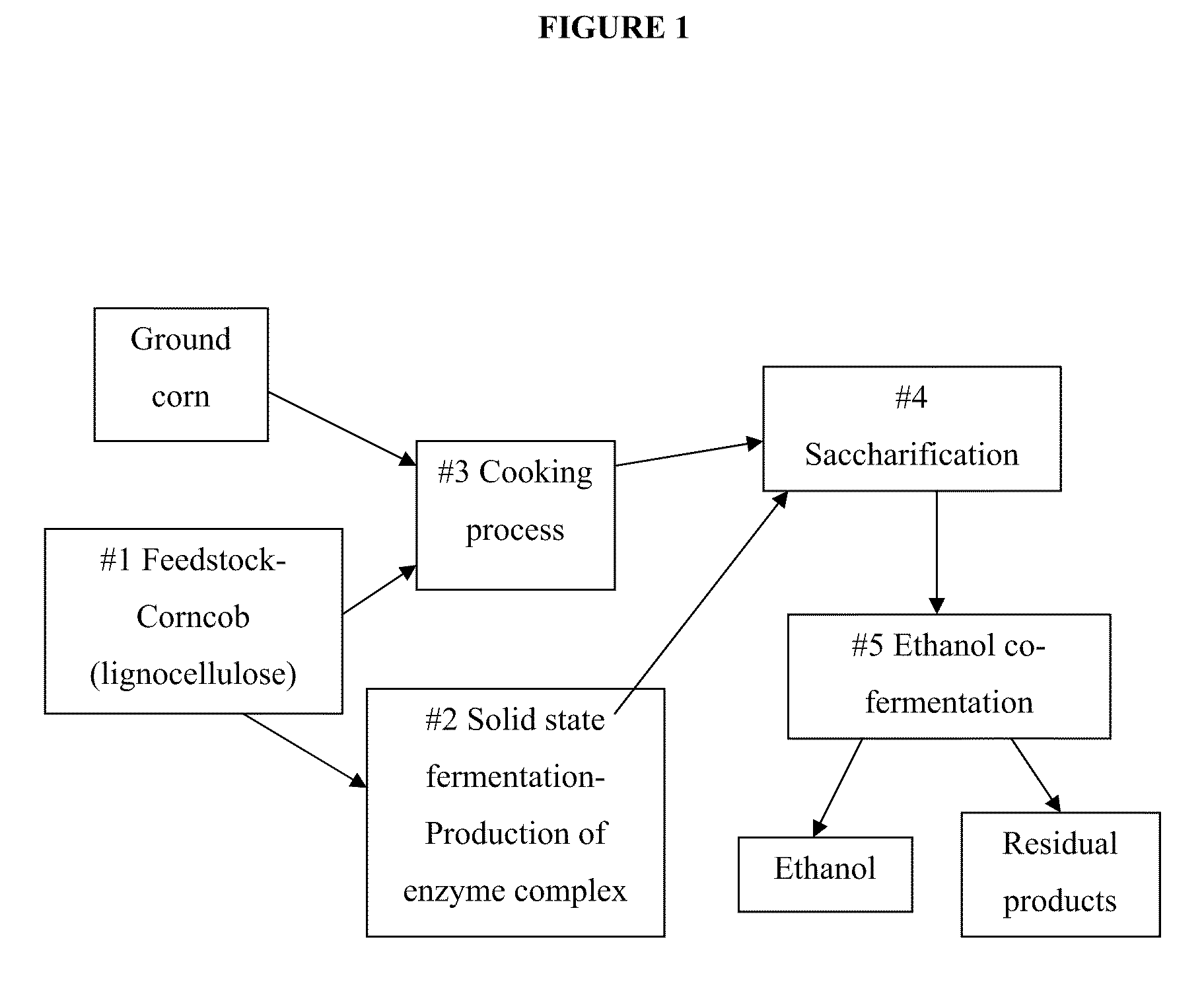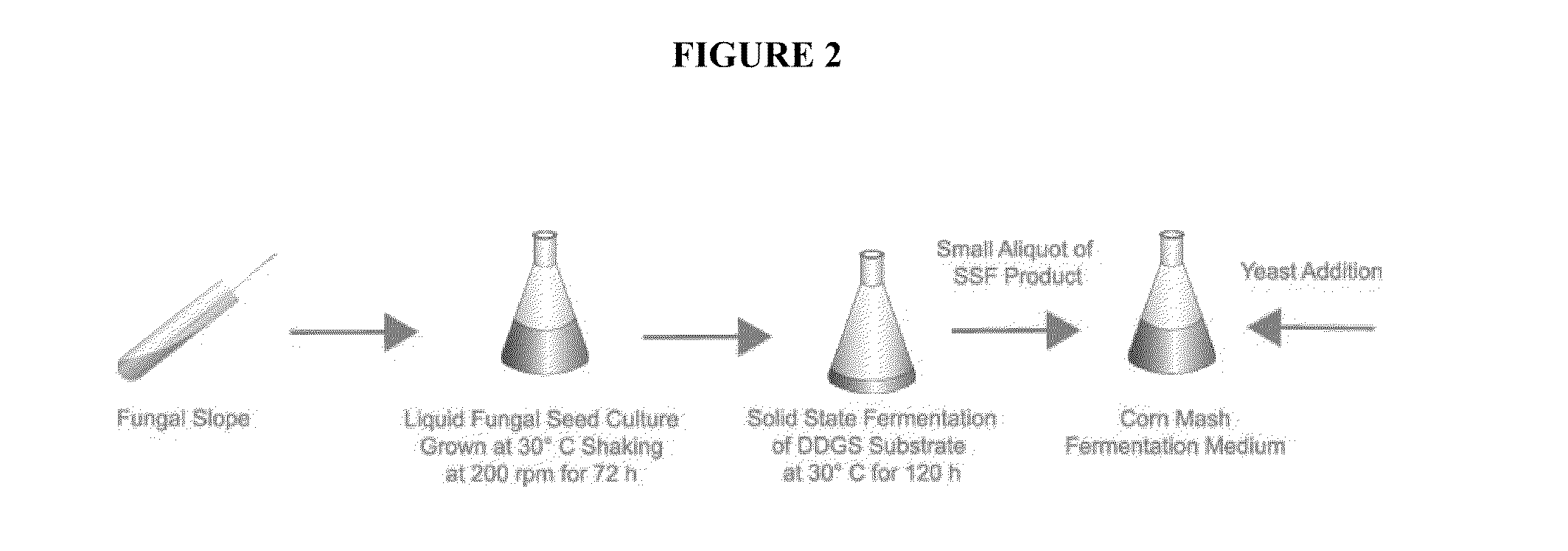Compositions and methods for conversion of lignocellulosic material to fermentable sugars and products produced therefrom
- Summary
- Abstract
- Description
- Claims
- Application Information
AI Technical Summary
Benefits of technology
Problems solved by technology
Method used
Image
Examples
example 1
Solid-State Fermentation Products Grown on Dried Distillers Grains with Solubles (DGGS) Substrate
Materials and Methods
[0059]Organisms: Strains of Aspergillus oryzae and Rhizopus oligosporus were used for solid-state fermentation. Both strains are designated as Generally Regarded As Safe (GRAS) organisms. Strains were stored on Difco Potato Dextrose Agar slopes at 4° C. until required.
[0060]Two yeast strains used for the fermentation of the corn mashes were commercially available strains of Saccharomyces cerevisiae. SUPERSTART (Ethanol Technology, Milwaukee, Wis., USA) was an active dry yeast (ADY) preparation with a cell count of 20×109 cells / g at 85% viability and THERMOSACC (Ethanol Technology, Milwaukee, Wis., USA) was a wet cake preparation with a cell count of 15×109 / g at 90% viability.
[0061]Yeast addition to the corn mash fermentation: Yeast was added to the mash to give a final concentration of 30×106 live yeast cells / g of mash.
[0062]Source of DDGS: DDGS was provided by two c...
example 2
Nutritional Improvement of Distillers Grains by Solid State Fermentation
[0090]Materials and Methods: Strains of Rhizopus oligosporus and Aspergillus oryzae were used for fermentations on DDGS. All the microorganisms that were employed are generally regarded as safe (GRAS) and suitable for animal feed applications. DDGS was obtained from a whisky distillery Canadian Mist (Collingwood, Ontario, Canada) and a DDGS fuel ethanol source (Commonwealth Agri-Energy, Hopkinsville, Ky., USA). Canadian Mist used a proprietary blend of corn and barley malt for their fermentation process. Commonwealth Agri-Energy used 100% yellow #2 corn.
[0091]Seed Culture and Inoculum Preparation: Media for fungal propagation contained the following: corn starch (6.0% w / v) (PulpTex 12608, Cargill, Cedar Rapids, Iowa); Bacto™ peptone (1.8% w / v) (Difco); dextrose (0.50% w / v); yeast extract (0.50% w / v) (LP0021, Oxoid, Ltd., Basingstoke, Hampshire, England); MgSO4.7H2O (0.15% w / v); KCl (0.10% w / v); KH2PO4 (0.10% w / v...
example 3
Production of Ethanol from Lignocellulosic Feedstock Using an Integrated Biorefinery
[0112]Steps in a method for an integrated biorefinery producing ethanol from lignocellulosic feedstocks are depicted in FIG. 1 and are described herein.
[0113]A. Priming and Ethanologenic Feedstocks: Lignocellulosic priming feedstock was identified and characterized that supports the production of lignocellulose-degrading compositions and the ethanol fermentation process. Corncob was extensively used in experiments conducted during development of embodiments of the invention but other substrates such as switchgrass, wood chips and corn stover are contemplated to be utilizable with similar results. The lignocellulosic component of the ethanologenic feedstock mash produced for use in the ethanol co-fermentation process was 30% and the remaining 70% was made of ground corn kernels. Of the 30% lignocellulosic material (corncob), 25% was raw ground corncob and the other 5% was used to form a lignocellulose...
PUM
 Login to View More
Login to View More Abstract
Description
Claims
Application Information
 Login to View More
Login to View More - R&D
- Intellectual Property
- Life Sciences
- Materials
- Tech Scout
- Unparalleled Data Quality
- Higher Quality Content
- 60% Fewer Hallucinations
Browse by: Latest US Patents, China's latest patents, Technical Efficacy Thesaurus, Application Domain, Technology Topic, Popular Technical Reports.
© 2025 PatSnap. All rights reserved.Legal|Privacy policy|Modern Slavery Act Transparency Statement|Sitemap|About US| Contact US: help@patsnap.com



